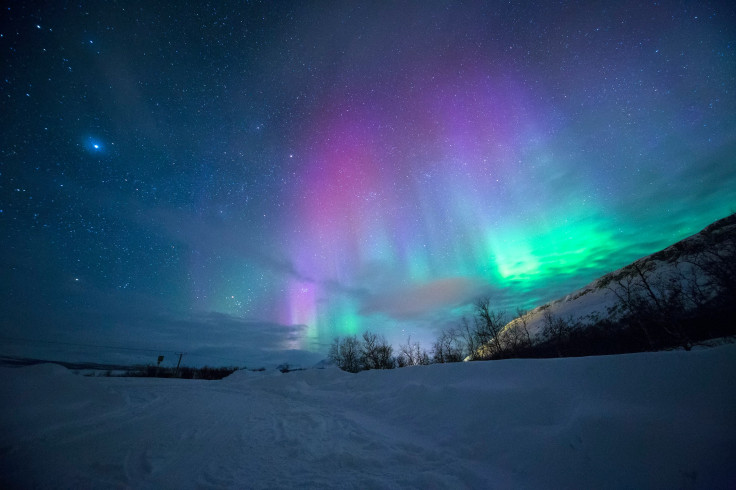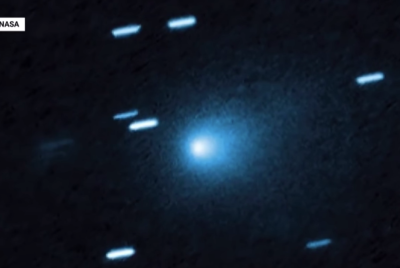Northern Lights Seen in Florida Explained: Rare Solar Storm Turns the Sky Electric Green
Auroras stretched from Texas to Florida as solar activity reached its peak

What began as a scientific forecast soon turned into a twilight spectacle, as the glowing curtains of the Aurora Borealis reached uncommonly southern latitudes in the United States, even reports emerging from north Florida.
A powerful solar storm, with ramifications for satellites and power grids, has thrown charged particles into Earth's atmosphere and lit up the night sky in hues of green, red and violet.
The Trigger Behind the Sky-Show
The homeland agency Space Weather Prediction Center (SWPC), part of National Oceanic and Atmospheric Administration (NOAA), issued a G4 'severe' geomagnetic storm watch for 12 November, the second-highest level on the five-step scale.
The storm was driven by a major coronal mass ejection (CME) from the Sun, sweeping a stream of energized particles towards Earth.
As the particles struck Earth's magnetosphere, they disturbed the upper atmosphere and allowed auroral displays to expand far beyond their usual high-latitude haunts.
Why This is so Rare and Why It Matters
Auroras typically adorn skies near the magnetic poles; they very seldom stretch into lower latitudes.
However, during intense geomagnetic storms the auroral oval expands, meaning more southerly regions may witness this natural light show. Historical precedents show that under extreme conditions auroras have appeared as far south as Florida.
The human consequence here, beyond the spectacle, is that these storms may disrupt satellite communications, GPS signals and power systems.
Solar Activity at Its Peak — and What We're Seeing
The current solar cycle (Cycle 25) has been notably active, with several X-class flares and fast CMEs recorded.
The combination of a fast-moving CME and favourable magnetic field orientation made this event especially geoeffective.
According to SWPC, the 'Aurora Viewline' map now shows the potential for auroras stretching into US states previously deemed unlikely for such displays.
Reports from Across the US and Florida-Area Sightings
Observers across Texas, Alabama, Georgia and even the Florida panhandle reported glimpses of the aurora last night. News station WWSB in Sarasota, Florida noted that 'people are reporting seeing the northern lights as far south as north Florida'.
Meanwhile, in Georgia, officials reported auroral visibility in the north of the state and along the Florida panhandle.
Conditions vary locally; cloud cover, light pollution and horizon clarity all affect whether the phenomenon is visible to the naked eye.
Northern lights visible over the North Texas area tonight pic.twitter.com/5tY0rhDsv1
— Dallas Texas TV (@DallasTexasTV) November 12, 2025
Northern lights in Florida.
— Nicoboi ❄️ (@nicoboi__) November 12, 2025
I can't believe this beauty 🌌 pic.twitter.com/Fny6RWCpmk
The Science of the 'Electric Green' Sky
The vivid green light observed in auroras comes from interactions between charged solar particles and oxygen molecules in the upper atmosphere.
When these energetic particles collide with atmospheric gases, electrons become excited and emit photons as they return to their ground state.
In the current storm, the strength of the charged-particle influx meant that the auroral oval was pushed significantly southwards, making sightings in ordinarily unlikely locations possible.
What Watchers Should Know Now
SWPC forecasters expect elevated geomagnetic conditions to persist over the next 24-48 hours.
For those hoping to see the aurora in the US southern states or Florida, experts recommend heading to a dark location with a clear northern horizon around midnight local time, and leaving phone cameras on night mode, even if the aurora is faint, long-exposure shots may capture the glow.
© Copyright IBTimes 2025. All rights reserved.





















